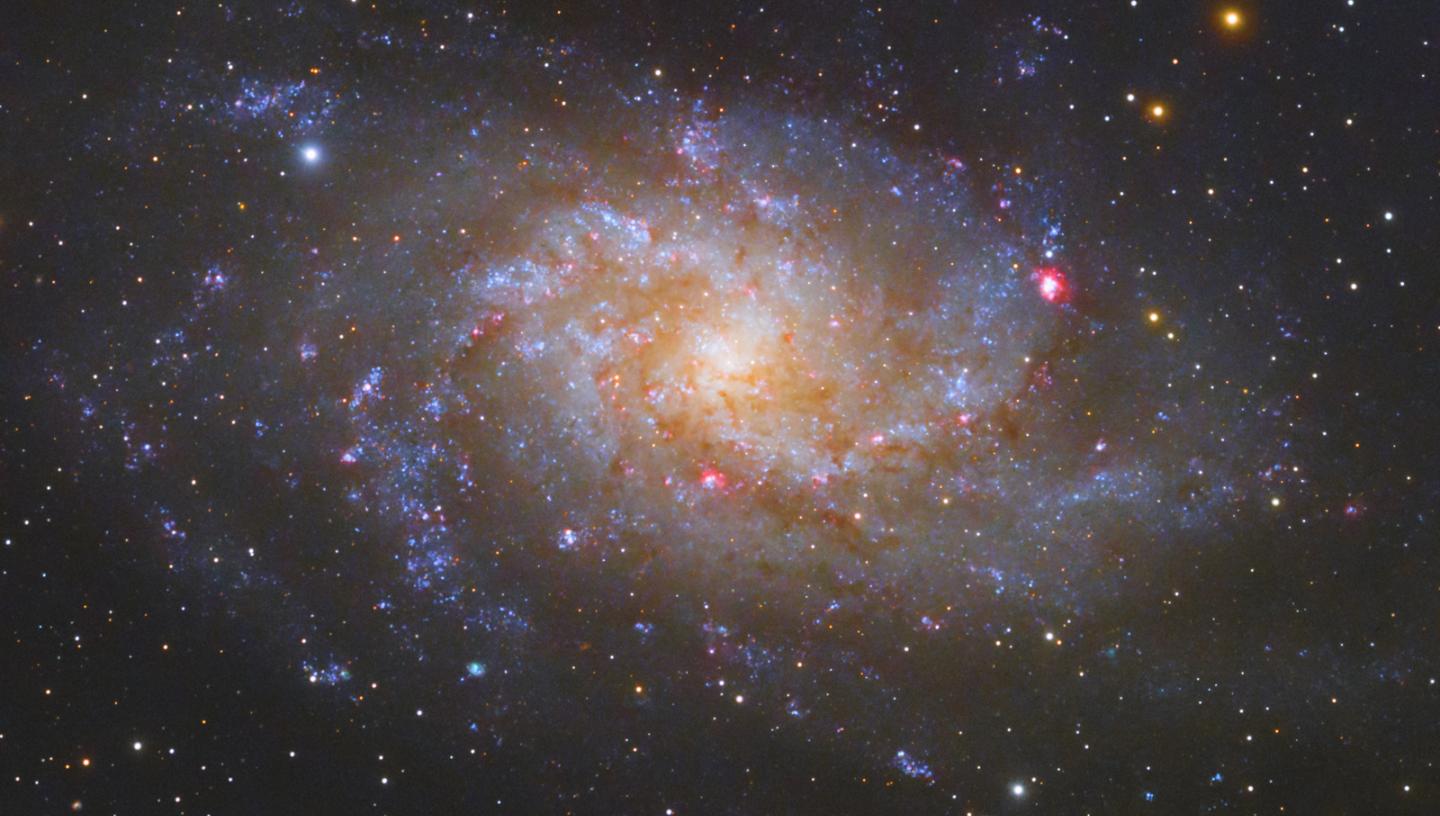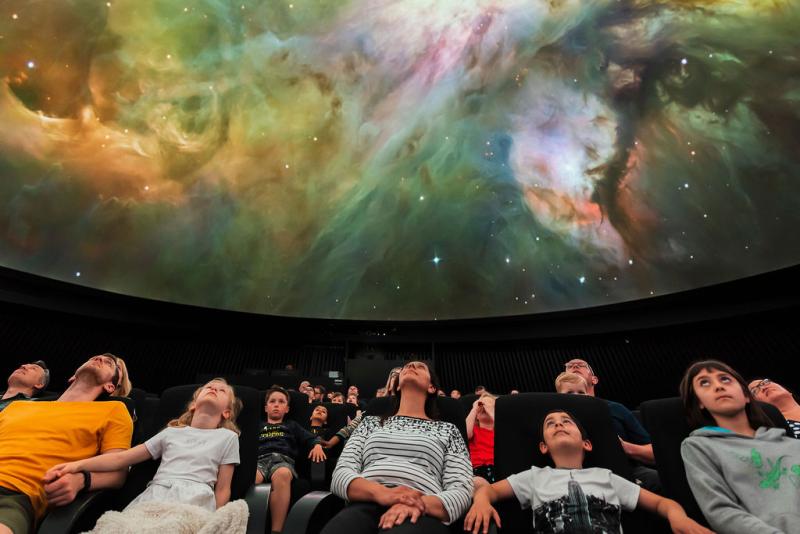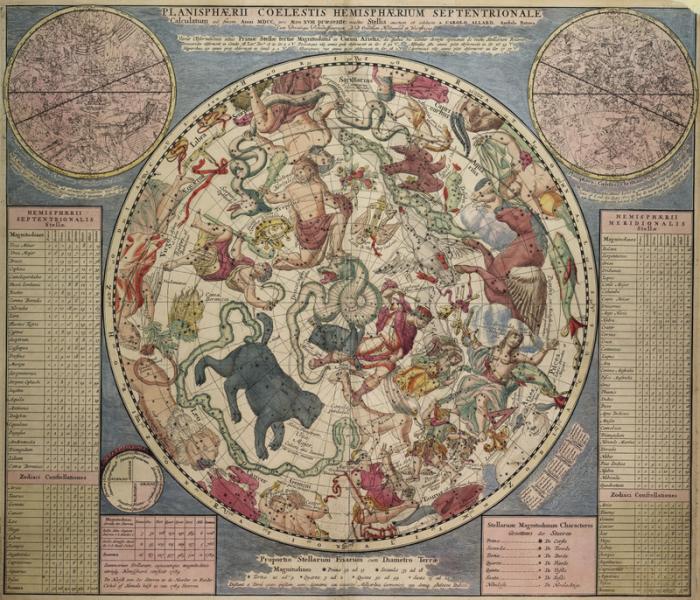
The Universe
Cosmology is the study of the origin and development of the Universe and the currently most popular theory is that of the Big Bang.
This theorises that at about 13,000,000,000 years ago all the matter and space that make up the Universe were concentrated into a very small volume. The theory states that the Universe came into being as an extremely small volume full of energy, which gave the Universe a very high temperature. As the Universe expanded so the fundamental atomic particles were formed as a mixture dominated by hydrogen with some helium and almost nothing else.
Where has it all gone?
Some of the greatest current problems in astrophysics arise from consideration of how the galaxies formed, and what is the nature of the mass of the Universe (we can only identify 10 percent of what must be there).
The study of the early Universe is possible due to the finite speed of light. As we look at galaxies many millions of light years away we see them as they were when the light left them - many millions of years ago. These remote objects are, of course, faint and hence astronomers always want to use larger telescopes and more efficient detectors so that they can measure further back in time.
Evidence for the Big Bang
Until well into the 20th century astronomers did not know that the Milky Way was a galaxy and that the ‘island universes’ seen through large telescopes were galaxies, systems of many, many stars grouped together like the Milky Way.
The fundamental discovery which demonstrated this was made by Hubble, who showed that galaxies were getting further apart. The deduction from this is that space itself is expanding and it was soon appreciated that the Milky Way was one of a very great number of galaxies and that it, like the Sun, had no special place in the system of galaxies.
This theory received a boost in 1965 when radiation at 3 degrees K, the microwave background radiation, was discovered coming from all directions in space. This radiation was predicted to be a remnant from the very early time in the age of the Universe, before matter had been formed, when the Universe was still filled with hot radiation. The radiation was isotropic and it corresponded to a temperature that was consistent with red-shifted radiation from the Big Bang.
Evolution
From the observation of galaxies using optical wavelengths it was not possible to find evolutionary effects and so the hypothesis that the Universe was in a steady state was a plausible one. In 1997 the Hubble Space Telescope (HST) obtained very deep exposures of galaxies at enormous distances from the Milky Way. Objects at this distance were seen as they were when the Universe was only 10% of its current age. The ‘Hubble Deep Field’ images demonstrated a clear difference in the appearance of galaxies in the early Universe from those seen today – definitive evidence for evolutionary change.
Predictions from the Big Bang
The theoretical analysis of the Big Bang has had various successes in predicting properties of the resulting universe. The biggest of these is the prediction of the relative abundances of the elements and their isotopic ratios. When the oldest stars, whose material has been altered least by the accumulation of material processed in the centres of earlier generations of stars, are investigated it has been shown that their abundance ratios are in excellent agreement with those predicted.
The expansion of the Universe from the Big Bang is strongly dependent on the mass of the Universe. There is one critical value which would mean that the Universe will expand for a long time, gradually slowing down and then reach a steady state. A mass less than this value will mean that the Universe will go on expanding for ever while a greater value will mean that the Universe will expand to a maximum size and then will start to contract – eventually returning to a very small volume.
Astronomers think that the mass of the Universe is equal to this critical value but can only locate one tenth of the matter necessary to reach this value. The same discrepancy is seen in the gravitational pull of individual galaxies and in clusters of galaxies. The mass appears to be there but we cannot identify it. This is called the ‘missing mass problem’.
The 'Shape' of the Universe
One of the hardest concepts to accept is that the Universe is everything that there is. Not only the matter and energy but all the dimensions as well. There is no 'outside' to the Universe and it has no 'edge'.
When we think of the Big Bang we instinctively think of the small Universe expanding like a sphere into an empty void. Unfortunately this is incorrect. The dimensions that we commonly use, three spatial and one time, are all mixed up when the early Universe is concerned and our normal concepts of space and time are not valid.
The Blue Gems in the Universe © Runwei Xu and Haocheng Li | shortlisted in Astronomy Photographer of the Year 2023 Young competition


